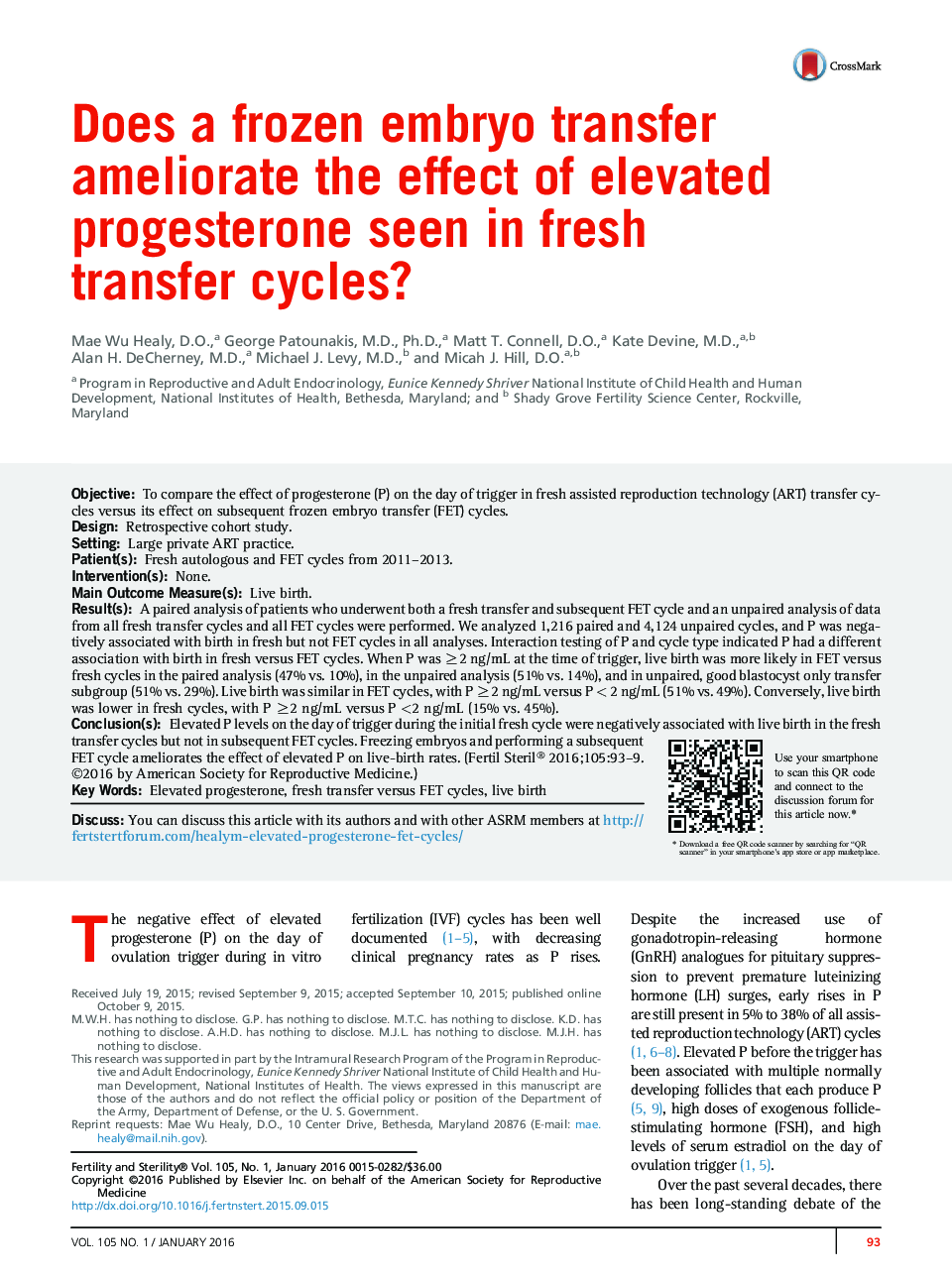| Article ID | Journal | Published Year | Pages | File Type |
|---|---|---|---|---|
| 6178559 | Fertility and Sterility | 2016 | 8 Pages |
ObjectiveTo compare the effect of progesterone (P) on the day of trigger in fresh assisted reproduction technology (ART) transfer cycles versus its effect on subsequent frozen embryo transfer (FET) cycles.DesignRetrospective cohort study.SettingLarge private ART practice.Patient(s)Fresh autologous and FET cycles from 2011-2013.Intervention(s)None.Main Outcome Measure(s)Live birth.Result(s)A paired analysis of patients who underwent both a fresh transfer and subsequent FET cycle and an unpaired analysis of data from all fresh transfer cycles and all FET cycles were performed. We analyzed 1,216 paired and 4,124 unpaired cycles, and P was negatively associated with birth in fresh but not FET cycles in all analyses. Interaction testing of P and cycle type indicated P had a different association with birth in fresh versus FET cycles. When P was â¥2 ng/mL at the time of trigger, live birth was more likely in FET versus fresh cycles in the paired analysis (47% vs. 10%), in the unpaired analysis (51% vs. 14%), and in unpaired, good blastocyst only transfer subgroup (51% vs. 29%). Live birth was similar in FET cycles, with P â¥2 ng/mL versus P < 2 ng/mL (51% vs. 49%). Conversely, live birth was lower in fresh cycles, with P â¥2 ng/mL versus P <2 ng/mL (15% vs. 45%).Conclusion(s)Elevated P levels on the day of trigger during the initial fresh cycle were negatively associated with live birth in the fresh transfer cycles but not in subsequent FET cycles. Freezing embryos and performing a subsequent FET cycle ameliorates the effect of elevated P on live-birth rates.
